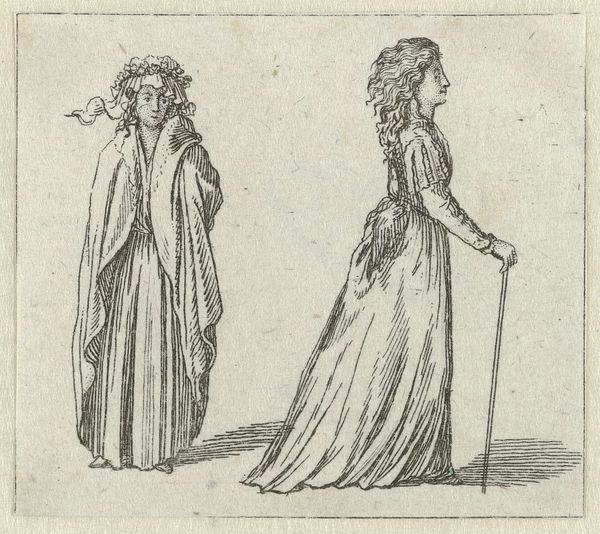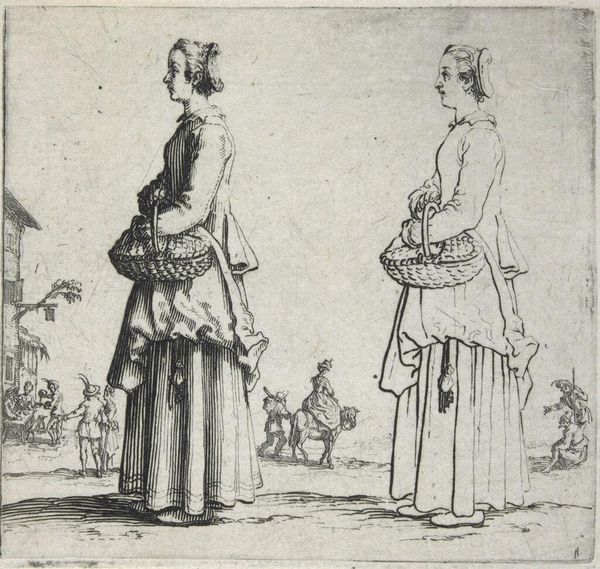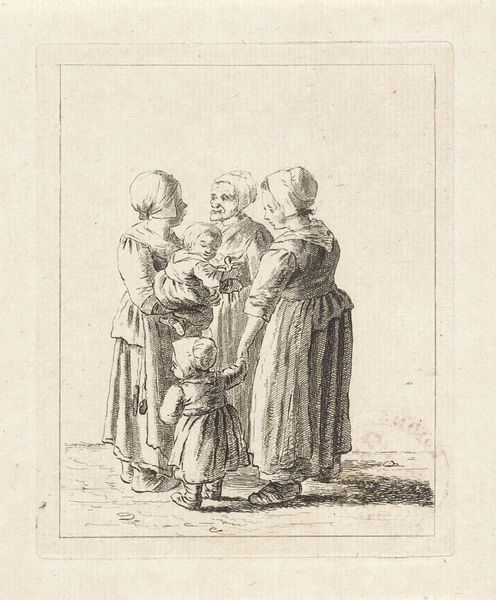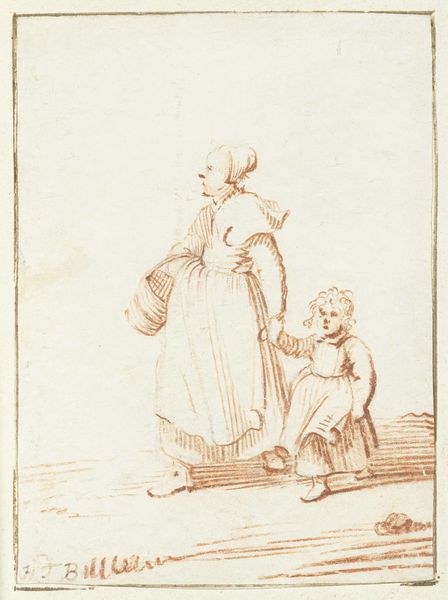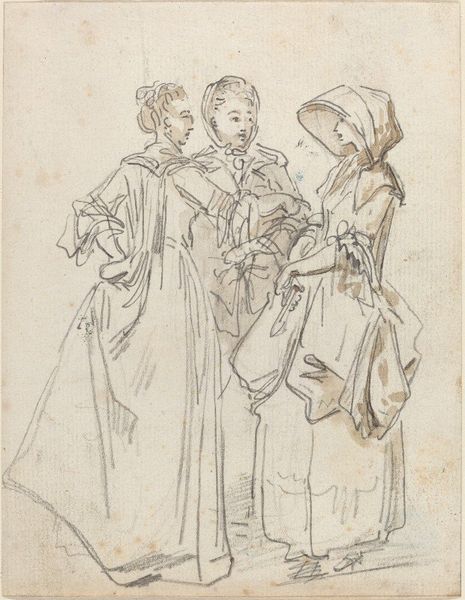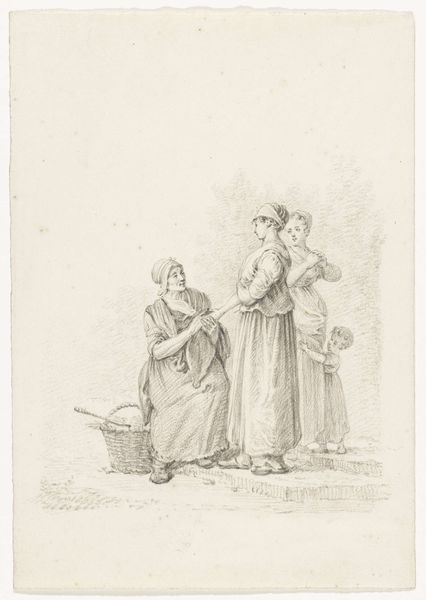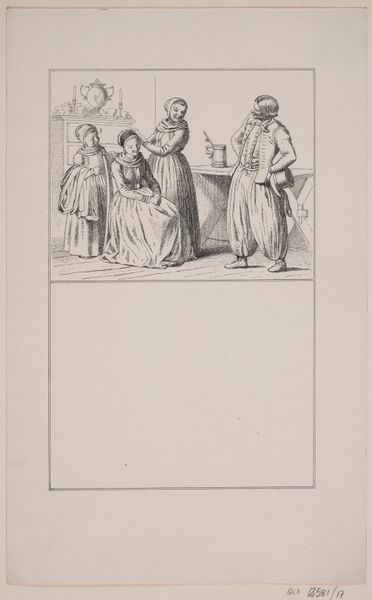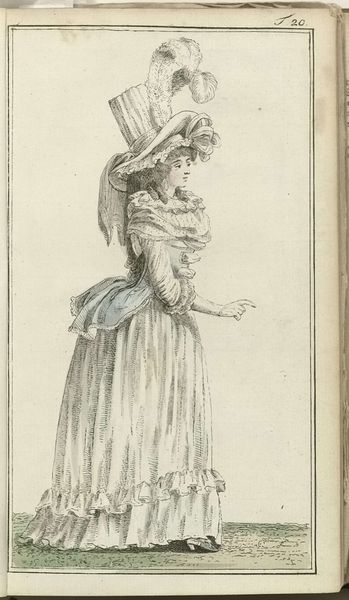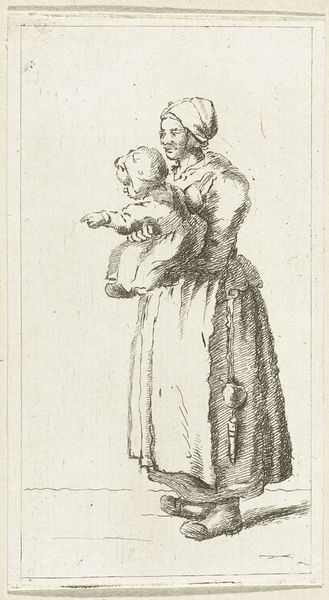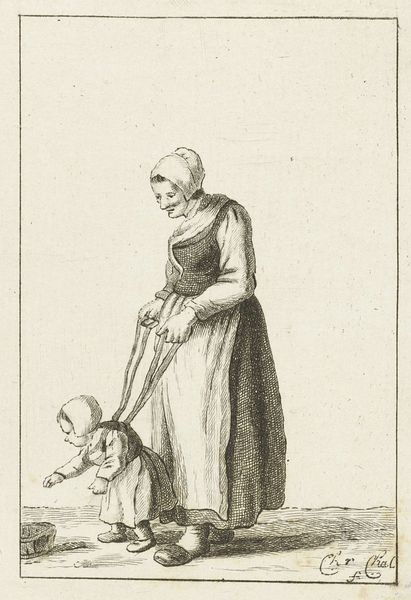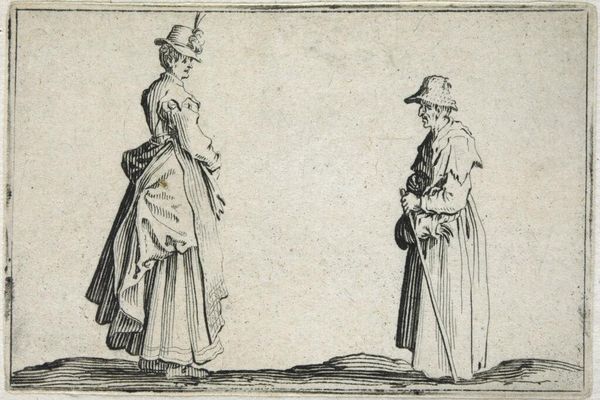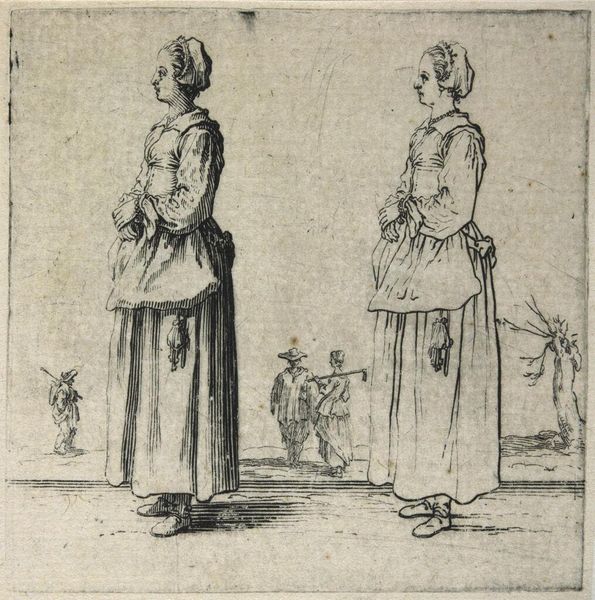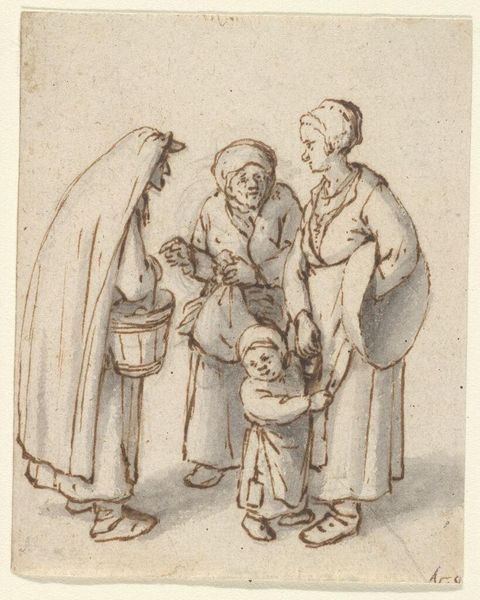
Habillemens de Leipsic. ca. 1785-1786: twee vrouwen en een meisje c. 1785 - 1786
0:00
0:00
Dimensions: height 46 mm, width 51 mm
Copyright: Rijks Museum: Open Domain
This print, Habillemens de Leipsic, was made around 1785 by Ernst Ludwig Riepenhausen, and captures the fashions of its time using engraving. The image is defined by thin, precise lines etched into a metal plate, likely copper, then inked and printed onto paper. Look closely, and you will notice that each line required a deliberate action, a precise engagement between the engraver's tool, the metal, and the artist's hand. The choice of engraving speaks volumes about the period. During the 18th century, prints became increasingly important for disseminating information and fashion. The engraving process allowed for the relatively quick reproduction of images, satisfying a growing demand for visual culture. This created a feedback loop, stimulating the textile industry and related artisanal trades. Riepenhausen’s seemingly simple Habillemens de Leipsic is evidence of the ways that fashion, printmaking, and commerce were intertwined. It serves as a reminder that art is not just about individual expression, but also about the complex social and economic networks that enable its production and circulation.
Comments
No comments
Be the first to comment and join the conversation on the ultimate creative platform.
